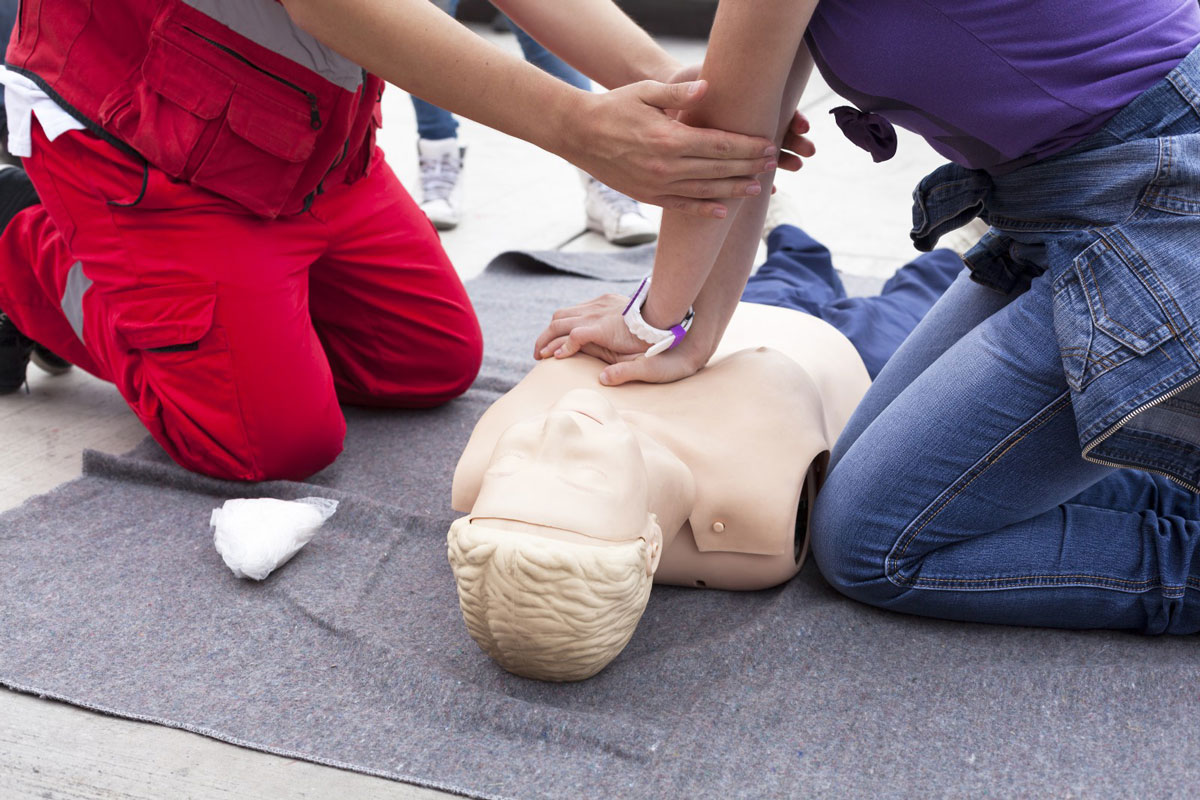Perhaps one of the most important life lessons that anyone could learn is the importance of administering first aid. Knowing first aid is beneficial to individuals and communities all over, as people are able to confidently administer medical aid during an accident or emergency. This has been proven to save lives.
First aid skills are versatile and can be applied in almost every situation, whether it’s home, work, school, or a public space. People trained with basic first aid skills are always prepared to help in the event of a medical emergency.

There are quite a few benefits to having basic first aid training, most notably it benefits individuals and communities, but first aid extends beyond that. Namely the ability to save lives. First aid training has been proven to help reduce a person’s recovery time. It can also mean the difference between a long-term disability and a temporary one.
How to Take Vital Signs
One of the first procedures that medical professionals learn is how to take vital signs. While you may not be a medical professional, learning first aid and CPR won’t mean much if you don’t understand vitals in the human body.
Measuring vital signs is important because it gives an internal look at how the body is functioning. Vital signs are often the first indicators of a possible medical condition. Usually vital signs are collected and recorded during a patient’s care from intake until discharge.
There are four vital signs that are constantly monitored in patients. They are:
Heart Rate: Also known as your pulse, heart rate monitors the number of heartbeats a patient has per minute (BPM). Heart rates vary by individual and they usually fluctuate due to various factors including, illness, injury, fitness levels, emotional state, etc. An average heart rate is between 60-100 BPM, although some professional athletes have been known to have a BPM of 40.
Respiration Rate: This is also called your breathing rate. Respiration rate is the number of breaths you take per minute. The normal range for respiration rates in adults is from 12 to 28 respirations per minute.
Body Temperature: Body temperature is the amount of heat that is located in your body. Thermoregulation controls our core body temperature which sits at a warm 98.6 F. Although body temperature can fluctuate wildly, a normal range is considered from 97.6 F to 99.6 F (36.4C to 37.5C). Body temperature below 97 degrees is indicative of hypothermia and should be treated accordingly.
Blood Pressure: Is a measurement of how effective oxygenated blood is moving through blood vessels in the circulatory system. It is measured in two parts:
Systolic Pressure: Which is when blood is pumped from the heart into the arteries.
Diastolic Pressure: This is the amount of pressure located inside the artery as the heart rests.
Different Types of First Aid
First aid is an umbrella term that encompasses what is essentially medical responses to events, accidental or not, until emergency medical personnel can arrive and further assess the patient and take them for treatment. Usually, first aid is performed with the help of a first aid kit or any accessible items in the vicinity of a medical situation.
However, the most common forms of first aid are usually for situations that may or may not require the use of Emergency Medical Technicians (EMT). For major medical procedures, the most common first aid administered is cardiopulmonary resuscitation, better known as CPR. CPR is administered for victims of sudden cardiac arrest or some forms of heart arrhythmia. CPR is performed for the sole purpose of stopping heart and brain tissue from decaying by forcing the blood flow from the heart via manual compressions. Although CPR requires training, many other forms of first aid can be performed with basic common sense.
Important Items Every First Aid Kit Needs
First aid is about being the most prepared at a moment’s notice. Medical emergencies can happen anywhere and at any time, which is why it is important to maintain a well-stocked first aid kit. You should keep a first aid kit in both your home and your car, making sure to store it someplace easy to get to, yet out of the reach of very young children.
You should be sure to curtail your first aid kit to activities that you and your family enjoy in case of an emergency. For example, if your children or you enjoy contact sports such as football or wrestling, it would be beneficial to keep a finger splint (or two) in your kit for good measure.
Other basic supplies for a first aid kit include:
Bandages & Tapes & Wraps
- Adhesive bandage
- Elastic wrap bandages, bandage strips and butterfly bandages in assorted sizes
- Nonstick sterile bandages and roller gauze in assorted sizes
For Fractures, Sprains, or Inflammation
- Finger splints, instant cold packs, cotton balls, and cotton-tipped swabs
- Safety pins in assorted sizes
- Scissors and tweezers
For Disinfecting
- Hand sanitizer,
- Antibiotic ointment, antiseptic solution, and towelettes
- Hydrogen peroxide
Remember knowing how to administer first aid is a serious undertaking. Not only is a well-stocked first aid kit a valuable tool, but other first aid apps available on smartphones might be able to help as well. As technology advances, so does our understanding of medical conditions and the best way to treat them. Whether it’s through first aid, preventive care, or regular treatment, health is a concern for everyone.